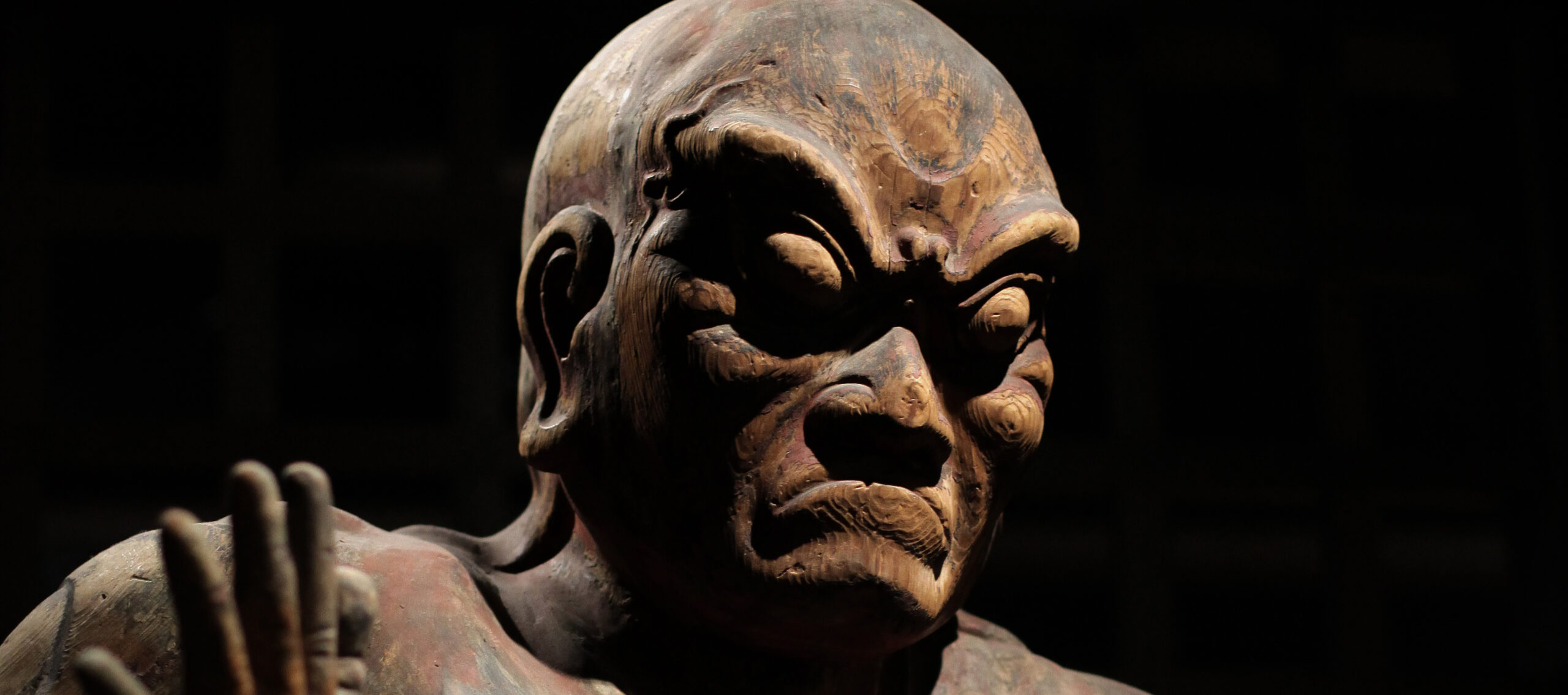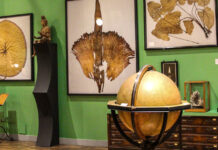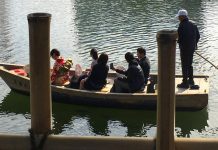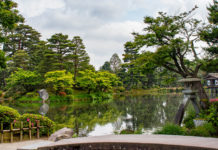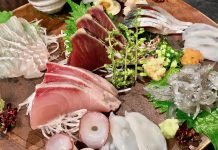Fukuoka City Art Museum is the kind of place you’d only want to talk about in whispers, for fear of the wider world finding out about it. Originals by Basquiat, Miró, Dalí, Kusama, displayed without laser barriers in near-empty galleries, with nobody taking selfies? Breathe. Breathe.
The downside of the Fukuoka City Art Museum’s ‘no photography’ rule is that images of the ‘Collection Highlights’ exhibition can’t be included with this article. However, the museum’s website offers a comprehensive overview of what’s on show. The museum includes multiple gallery rooms across two levels. On the ‘main’ floor are three galleries for the museum’s collection highlights, a seasonal exhibition (Women Artists in Kyushu, at the time of writing) and a larger hall for sculpture and installation. Downstairs in the basement is the museum’s cafe, a well-stocked gift shop, and the ‘pre-modern art’ hall. At the time of writing, the ‘pre-modern art’ gallery was showing ‘Buddhist Art from Tokoin Temple’: an astounding curation of Buddhist statuary masterworks from the temple’s collection.
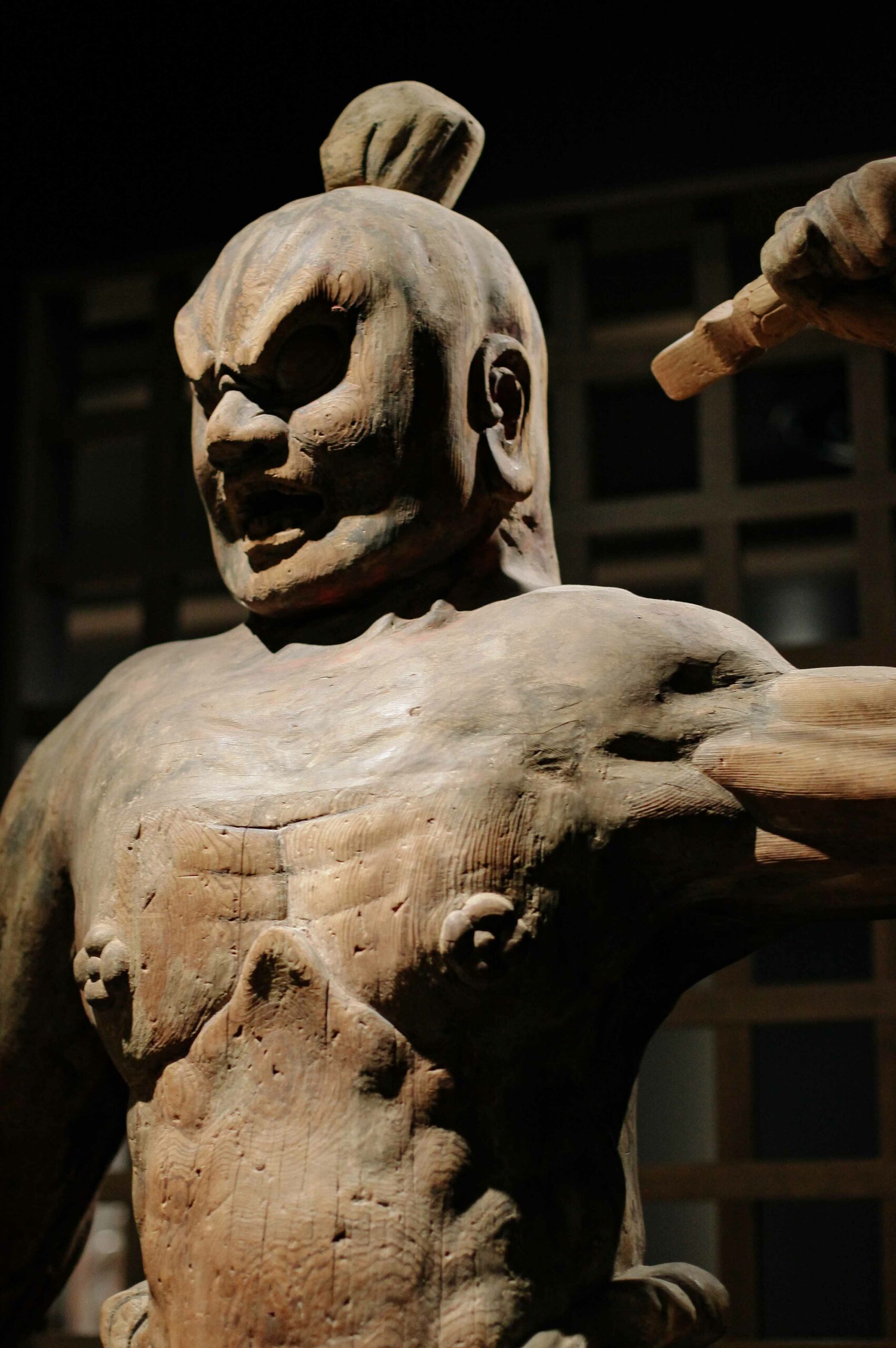
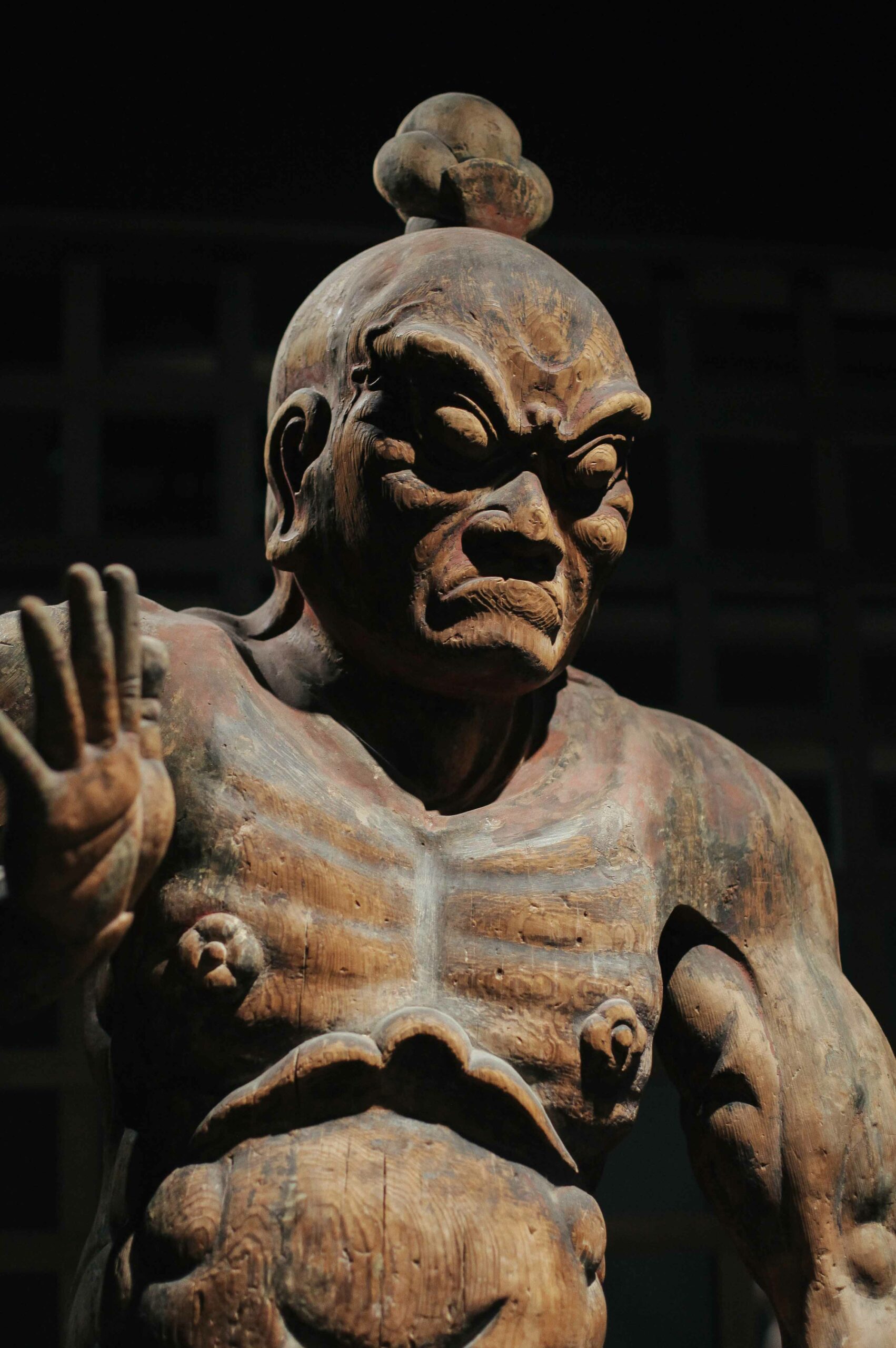
While the ‘Collection Highlights’ exhibition couldn’t be photographed due to intellectual property restrictions, the works are an integral part of Fukuoka City Art Museum’s appeal. Any art enthusiast wanting to see a Dalí, Kusama, or Basquiat up close in a European or American gallery would likely have to crane their necks to see over crowds wielding smartphones, or wait for people having their photos taken next to the artworks to move, before being hurried on by the next social media star. Not so, at this museum. While gallery stewards watch everyone who passes through (something you’d expect), you’re not accosted when standing too close to the artworks, and there are no laser barriers which beep accusingly at you when you’re leaning in to see details.
Because of this, you can take your time to look at the works as a whole and from a distance, and their smaller details, which are so rich in both technique and humanity. Seeing Salvador Dalí’s Madonna of Port Lligat up close is an entirely new experience. Known for his smooth gradients and precise lines, here, Dalí’s human hand is betrayed by miniscule waves of excess paint along the work’s horizon lines. Looking close, you stand where he stood, wondering if the tiny bulges of paint on his otherwise ‘dead flat’ vistas bothered him; if their existence irritated him late at night. This kind of experience proves the value of seeing original works at their intended size, from both near and far, and ideally without distraction.
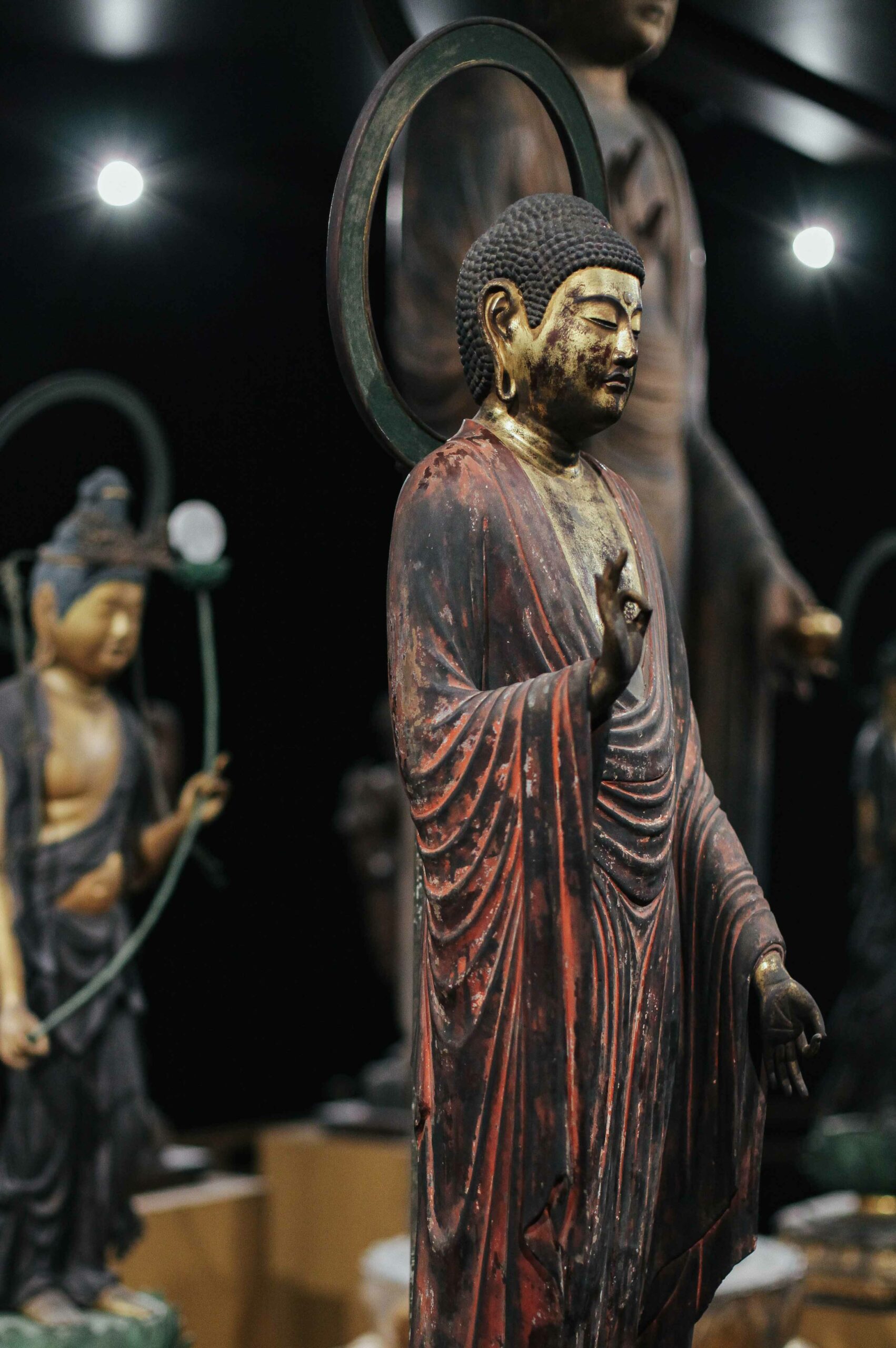
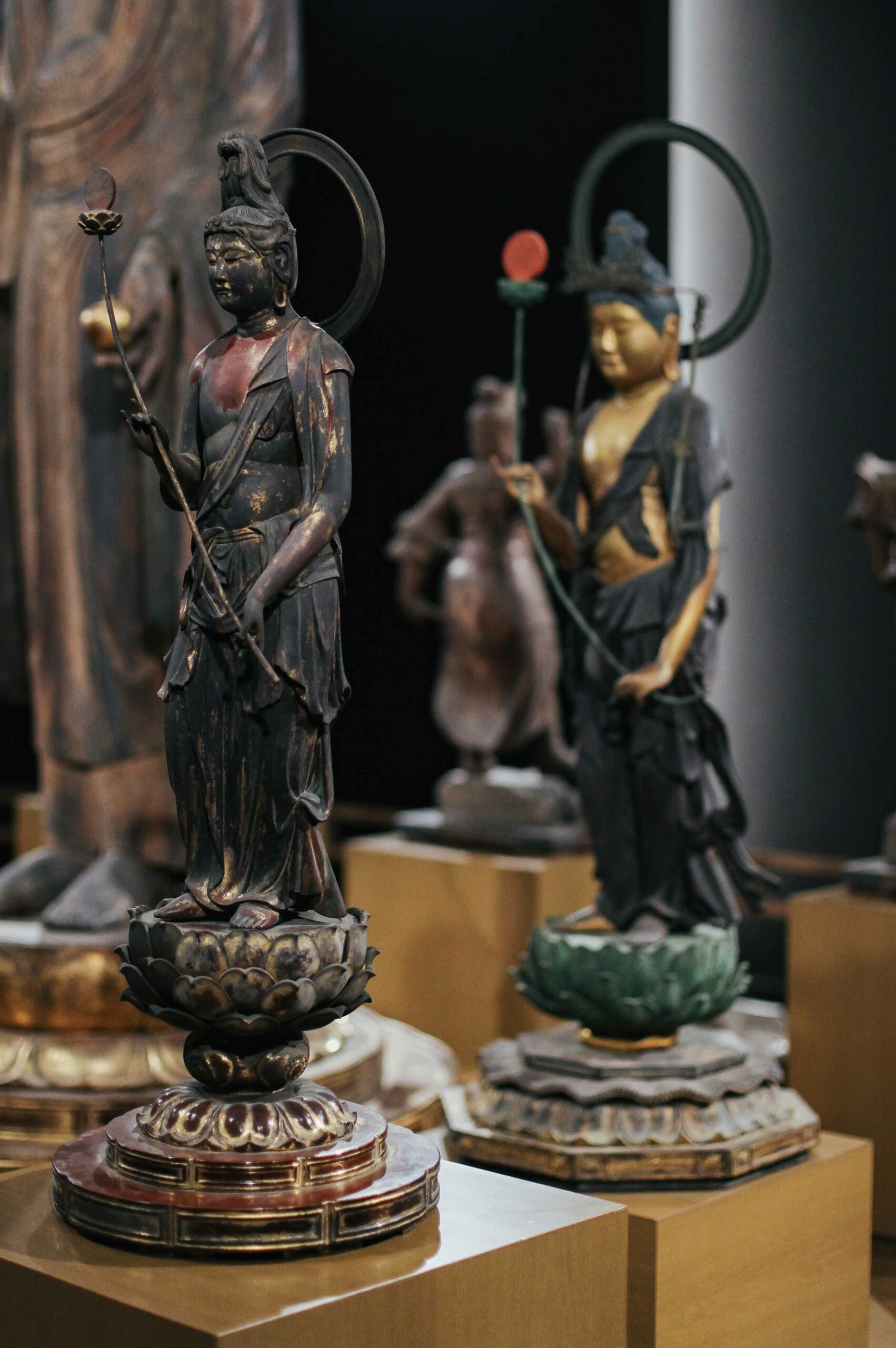
The same applies to Jean-Michel Basquiat’s Untitled (1984) and Mark Rothko’s Untitled (1961) – titles that don’t exactly fire the imagination, but works that at least hold your attention when seen in person. The gallery housing some of modern art’s most famous names then snakes around a corner, along a corridor and opens up into a high-ceilinged exhibition hall. A wide selection of contemporary works by Japanese painters is housed here, many of them made in the Abstract Expressionist style. The hall is also home to Shitoa Chiharu’s The Ship of Memories (2023) – a sweeping network of red acrylic threads woven into netting and draped from the ceiling, creating a towering waterfall of crimson. Anish Kapoor’s Mother as a Void (1990) is also in the corner of the hall; the temptation to throw a scrunched up ball of paper into the black fibreglass hole is hard to resist.
As well as the ‘Collection Highlights’ of contemporary international works, Fukuoka City Art Museum hosts seasonal exhibitions of work by Japanese artists. In November 2023, this took the form of “Women Painters in Kyushu”, showcasing works from the 1970s until the present day. These works, predominantly paintings and drawings, were placed in their own gallery, with walls given over to two-dimensional works, and central floor space reserved for installations. The exhibition was an engaging showcase, giving a platform to deserving artists from Japan’s Kyushu region. The Fukuoka City Art Museum continues to champion the work of Japanese artists, placing their creations alongside international artists’ work. It offers an ideal place to develop a better understanding of what contemporary Japanese art can look like.
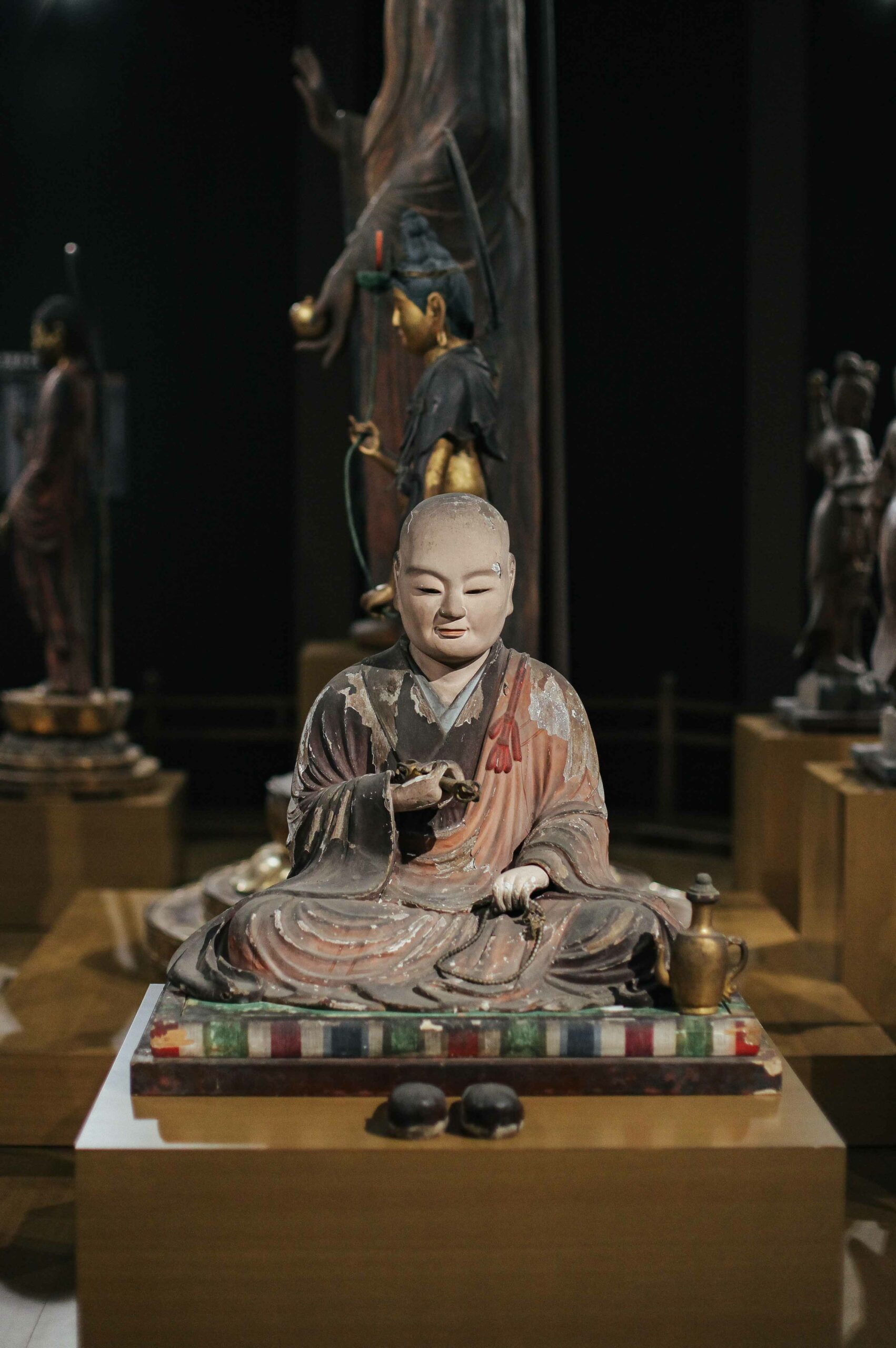
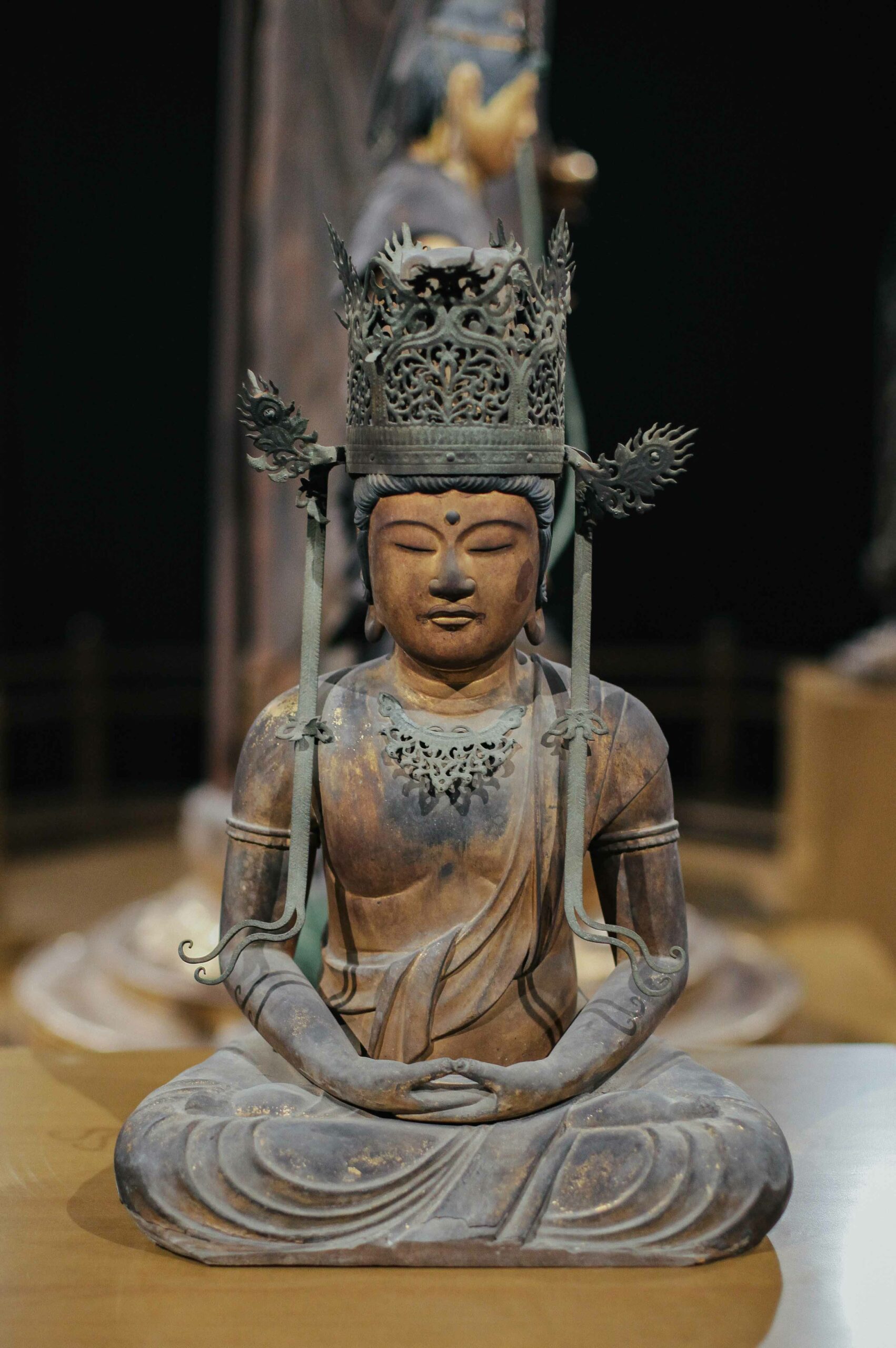
Wandering around both the upper and lower floors of Fukuoka City Art Museum can be done at leisure, as the museum offers coin lockers of varying sizes to store whatever you’re hauling around that day. In the foyer, there’s a large collection of contemporary art publications to peruse while reclining in a cushioned seat. Halfway through your visit, you may want to visit the basement-level café, which serves light lunches, sweets, and good coffee.
Your exhibition ticket also gives you access to the ‘pre-modern collection’, located at the end of a long hallway at basement level. This gallery exhibits items from both permanent and loaned collections, so there’s always something new to see. In autumn 2023, the gallery was hosting the ‘Buddhist Art from Tokoin Temple’ exhibit and, thankfully, photographs (without the use of a flash or tripod) were allowed. Better still, the excellent lighting within this gallery means that tripods and flashes aren’t even needed; the atmosphere feels positively cinematic in these darkened halls.

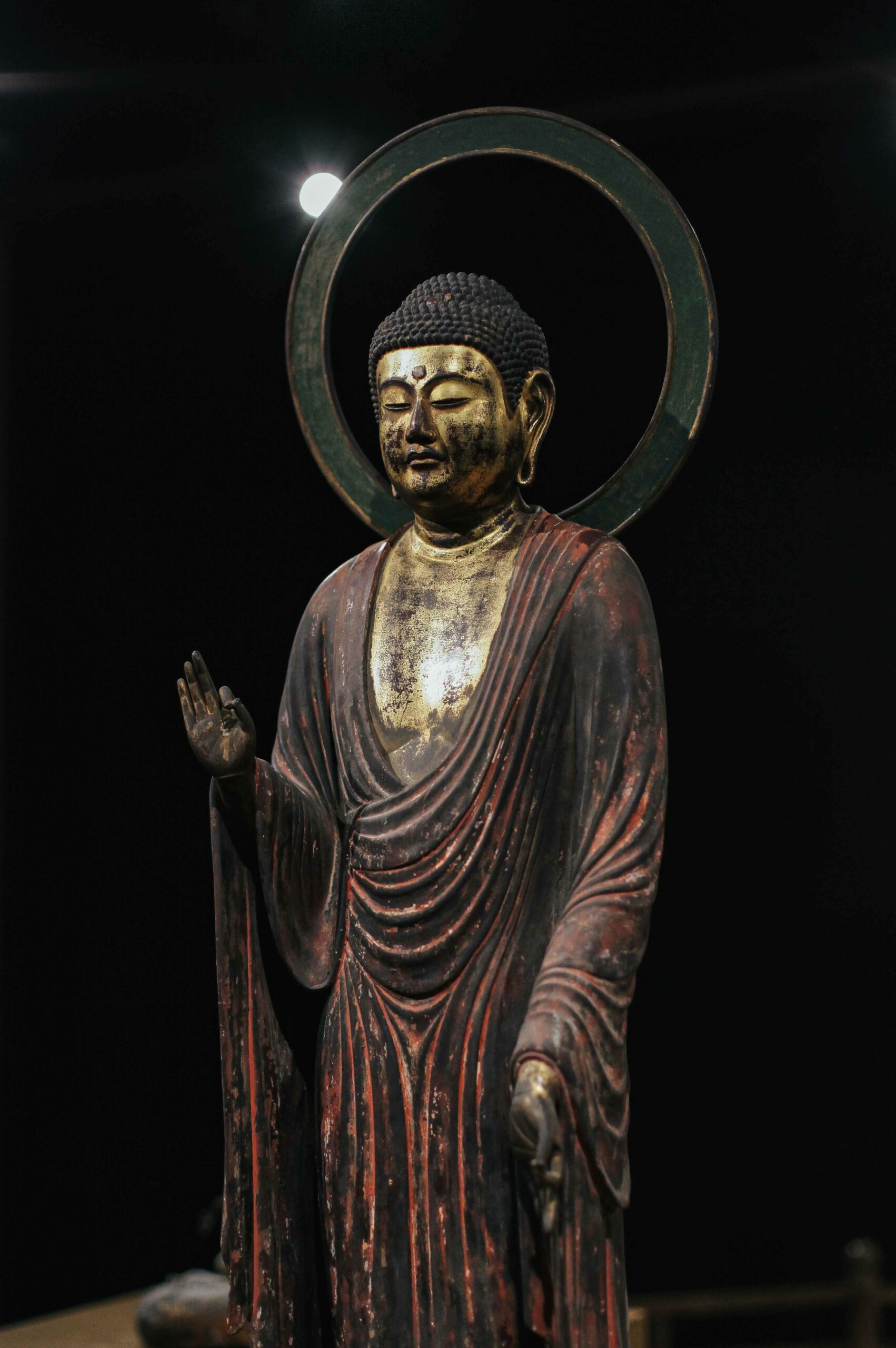
Buddhist statuary, aside from its role within religion, is an art form in its own right. It’s also a deeply complex form of craft; there’s more than one way to carve a Buddha. Many of the finest Japanese Buddhist statues are created using the ‘ichiboku’ (single piece of wood) method, which requires the selection of a flawless piece of wood, and the skill to carve and refine the wood into forms so organic they almost seem to breathe. Anyone who’s fortunate enough to have spent time alone in a Japanese temple in the presence of a carved statue will know that the longer you stare into their eyes, the more you feel that they are gazing back at you. It’s an uncanny and profound experience, and Fukuoka City Art Museum’s attention to detail in recreating the ‘temple atmosphere’ in this gallery means that you can experience this special connection in the middle of a modern gallery.
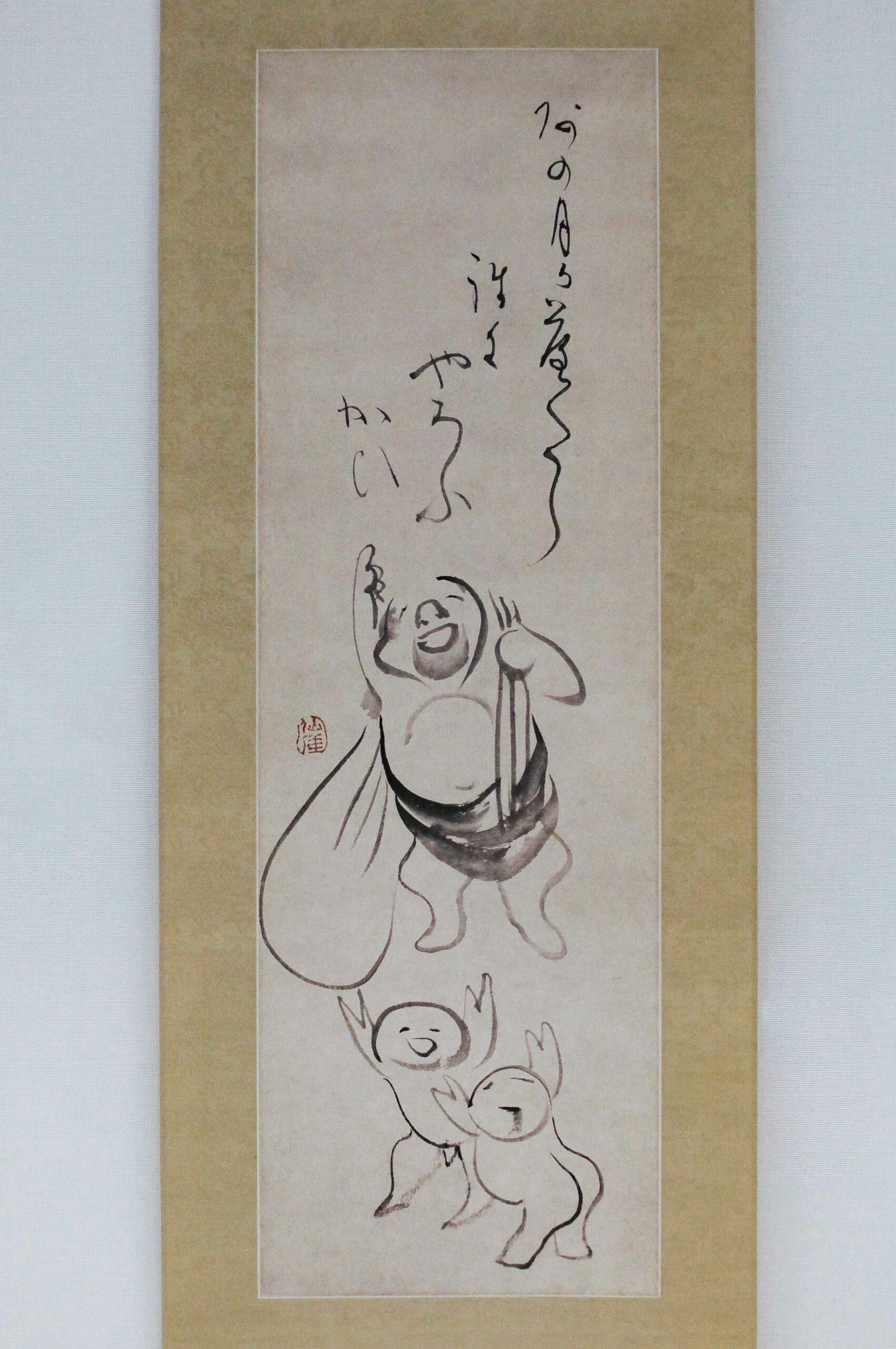

If you can bear to turn your back on the exhibition’s haunting Buddhist statues, you’re in for a treat. There’s a collection of ink paintings by Sengai Gibon (yes, it sounds like ‘gibbon’), an 18th century Rinzai Zen monk with an appreciation for the light-hearted and the bizarre. Sengai’s sumi ink paintings fly in the face of convention, defying the solemnity you’d expect from a Zen monk. His paintings include scenes of men flying kites, Daruma (Bodhidharma) as a single ‘blob’, a rotund dog, and a scroll memorably titled Father and Brat.
Sengai Gibon knew that the teachings of the Rinzai school of Zen were complicated and inaccessible to laypeople. His mode of teaching and use of friendly, endearing works of art was his attempt to inject humanity and relatability into a highly esoteric philosophy. Sengai spent the latter half of his life in Fukuoka’s Shо̄fuku-ji temple, and his connection to Fukuoka city is highly valued by those who live there. Shо̄fuku-ji temple, in Fukuoka’s Hakata district, was built in 1195 by Eisai, the monk who founded the Rinzai school of Zen Buddhism. This makes Shо̄fuku-ji the oldest existing Zen temple in all of Japan (take that, Kyoto!), and it’s highly worth visiting when in Fukuoka.
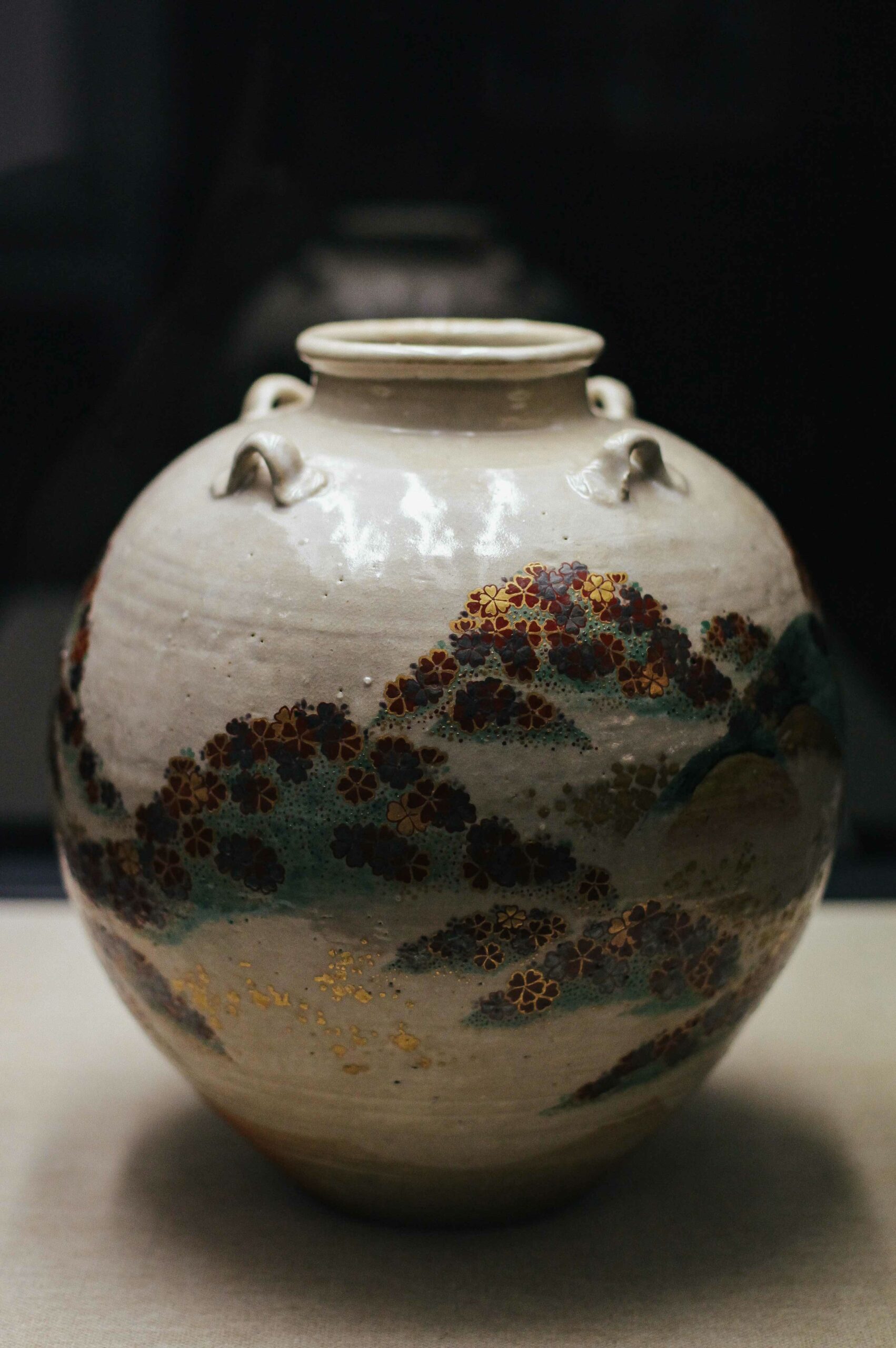
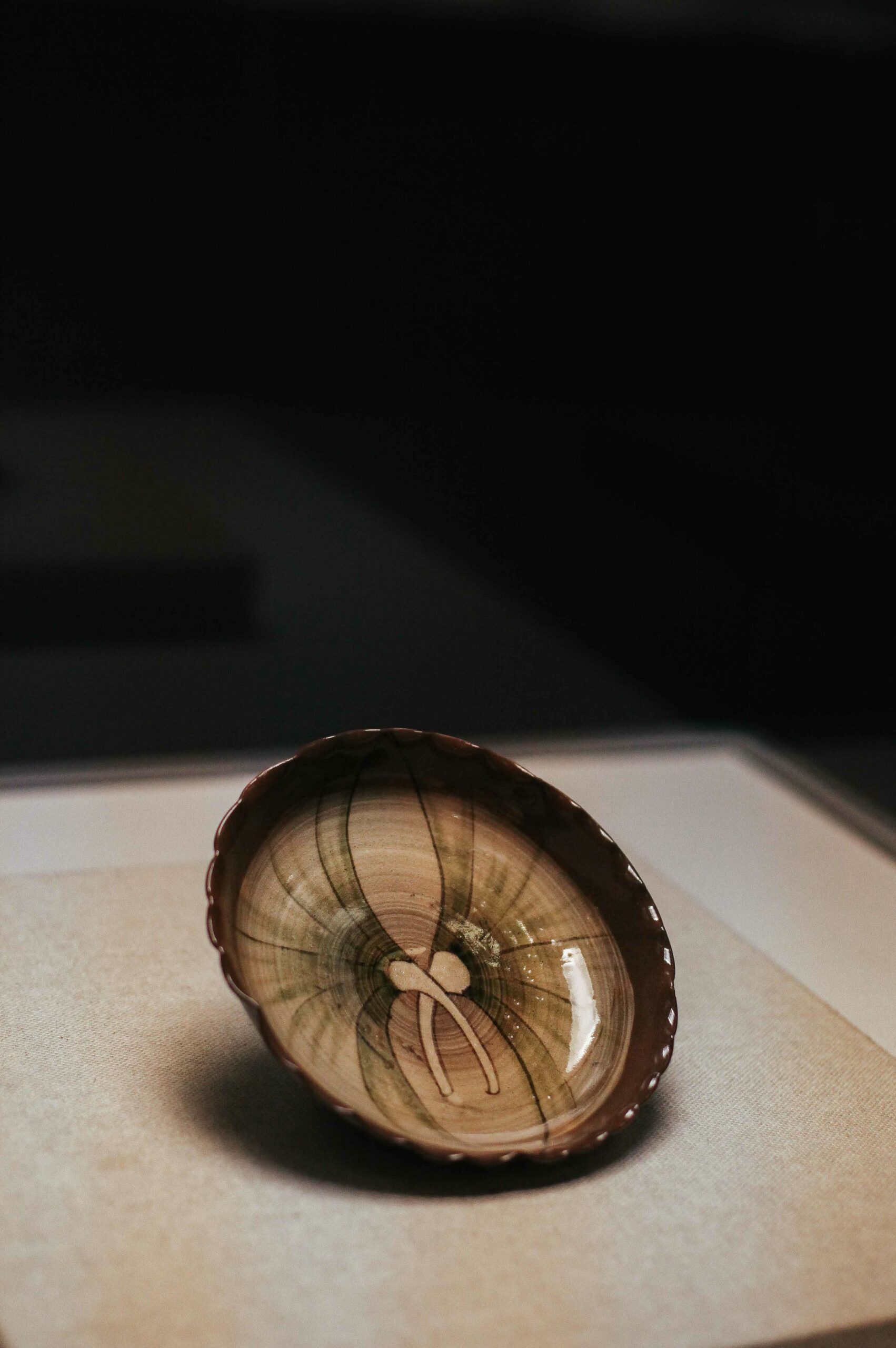
The ‘pre-modern’ exhibit concludes beautifully with a collection of ‘Utsutsugawa’ ceramic works from Nagasaki, housed in a square room with works lining all four walls. Kyushu has a rich history of artisanal potteries; much of the quality of the finished pieces are a result of the island’s powder-fine, mineral-rich volcanic soils. This exhibition also showcased pottery works from other regions of Kyushu, mapping out the locations of different ‘schools’ of pottery-making, as well as the locations of historical climbing kilns.
Fukuoka City Art Museum rotates its permanent collections regularly, and often has ‘special exhibitions’ in association with overseas art councils. The special exhibition for 2023-24 is titled ‘Roma’, and highlights the artistic heritage of the Italian city of Rome. The museum is a jewel in the crown of Japan’s art institutions, but is often overlooked by foreign tourists as it’s tucked away in Ōhori Park, away from the centre of the city. For the ideal day trip, visit the museum before or after stopping off at Ōhori Park Japanese Garden. There’s no better way to spend a day in Fukuoka city.
Access: From ‘Ōhori Park’ train station of Fukuoka’s orange ‘Airport Line’, follow this walking route through the park, to the museum.
Name: Fukuoka City Art Museum (福岡市武術官)
Address: 1-6 Ōhori Koen, Chuo-ku, Fukuoka city, Fukuoka prefecture, 810-0051 Japan
Open: 09:30am – 5:30pm (last entry 5:00pm, closed on Mondays)
Admission: ¥200
Website: https://www.fukuoka-art-museum.jp/en/
Post by Japan Journeys.



